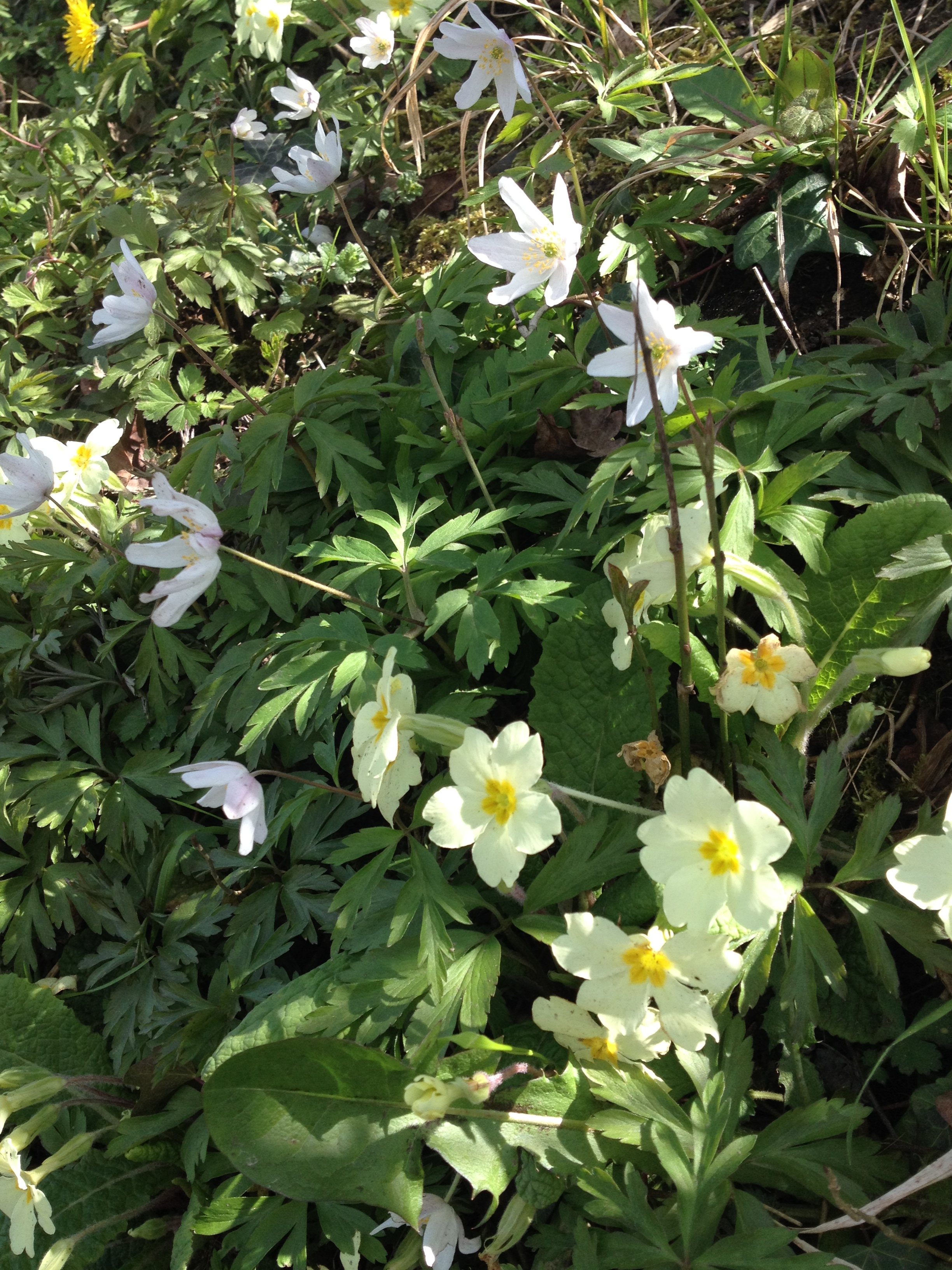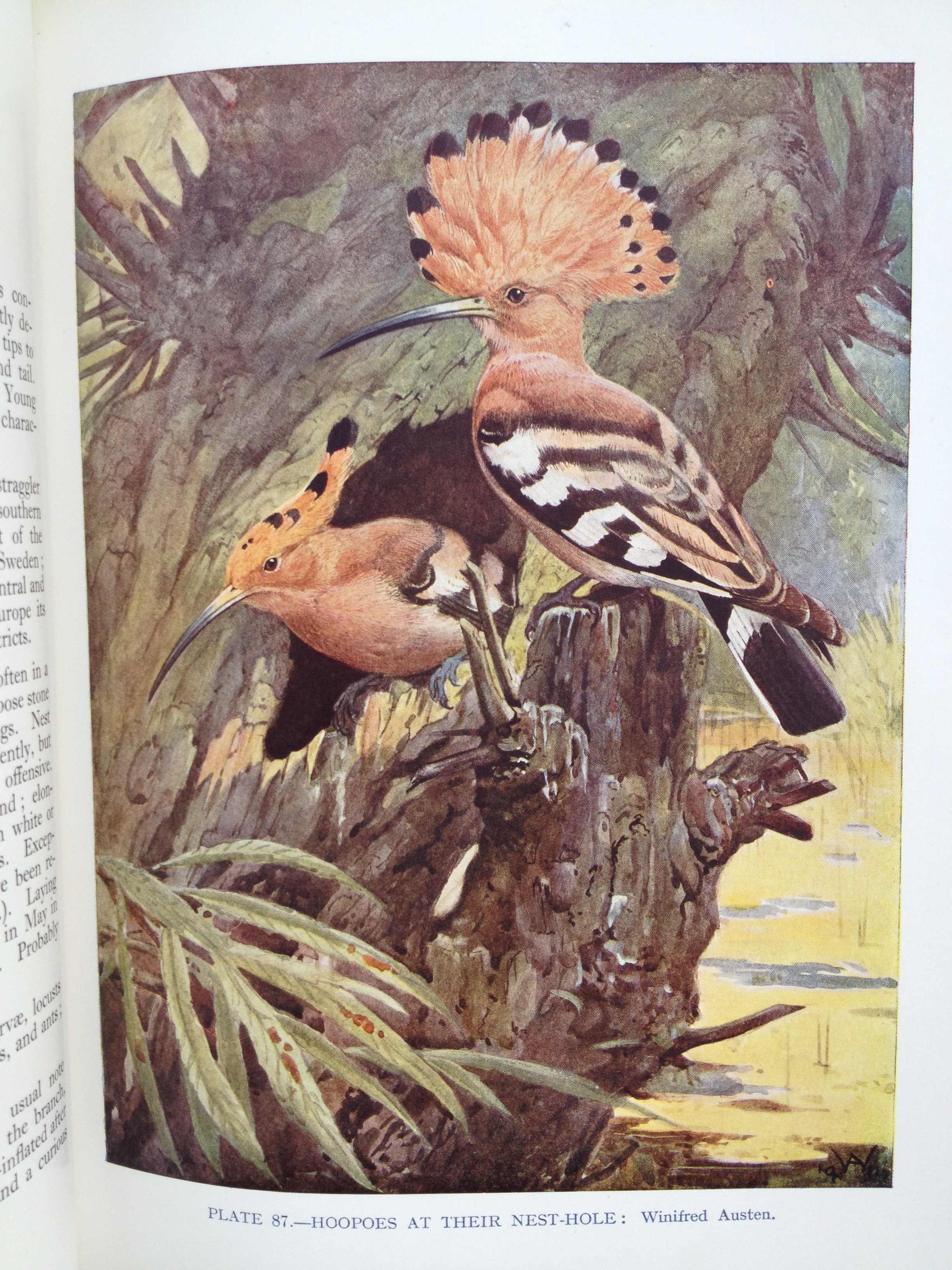An Almost-Hoopoe.

.My ten-year-old daughter described this reluctant spring perfectly as we passed a bank of wood anemones, their petals pursed tight, like lips withholding a secret: ‘it’s like the ground knows it’s spring, but the sky won’t have it’.
There were patchy reports of spring migrant birds coming through – wheatear and ring ouzel. I briefly see two of the latter on the southern flank of the hill, below the Iron Age hill fort. The white torcs across the birds’ breasts glow through the mist: they could be identical scars of chalk in the turf – mezzalunas of crescent moons. They are like little Celtic goddesses.
Grooming the horses sets clumps of hair floating off for birds’ nests. A hen blackbird bristles with an orange moustache of it. Then there is a commotion in the wood.
I hear the harsh rattle and protest of jays and what I take to be the squeezy wheeze of an indignant squirrel. A reaction to a predator perhaps; a sparrowhawk, or an owl? I resume currying the horse. Then, the low human-like whistle that has persisted on the edge of my curiosity piques it: it is like the louder, deeper whistle of a bullfinch. Or a pump. Or an unoiled wheel – something human going on in the farmyard. The commotion strikes up again and I know I must investigate. I am an inexpert and very local birder – but this means I know a strange bird when I hear one.

A whole woodful of jays is mobbing something. There are shrieks, chacks and the wheeze I could hear (though no squirrel) some clucks and that low ‘hoop, poo, poo’. In poor light I can make out a flurry of salmon-pink jay bodies, black and white wings and the slightly raised crests of jays – but why so many, reacting so strongly? They follow a winged creature, an indistinguishable something of their colour to another tree and then another and I follow it deeper into the wood. I can’t take my eye off this strange sight. There is the glimpse of something dove-like, butterfly-flighting, part-jay – is it a jay? Something of a zebra’s colouring flashes, a bird pieced together from pictures in books, with the wings of a Jersey tiger moth.
Behind me, in the yard, the mare has impatiently pulled at her rope, undone it and is making for the field. I have to double back on myself, looking over my shoulder until I reach the gate. The golden ticket of certainty flutters just out of reach, gets snagged on a thorn bush – and is gone.
What have I almost seen? Tick, tick, tick. And then it dawns. The sound, the suggestion of possibility, time of year … I am stitching an almost-mythical bird together from scraps of retina-printed fabric and a confused soundtrack. But it couldn’t be anything else. I put two and two together and get 50 points for an I-Spy hoopoe. A hoopoe. A bird that has the brilliant scientific name of Upupa epops. A bird so rare and exotic that its possibility hadn’t occurred to me: up to 100 are spotted each year, as passage migrants generally overshooting Southern Europe. But can you count a bird you haven’t quite seen? That nobody else saw? That has already gone?
Leave a Reply to nicolawritingCancel reply